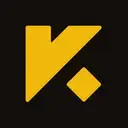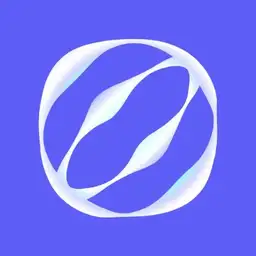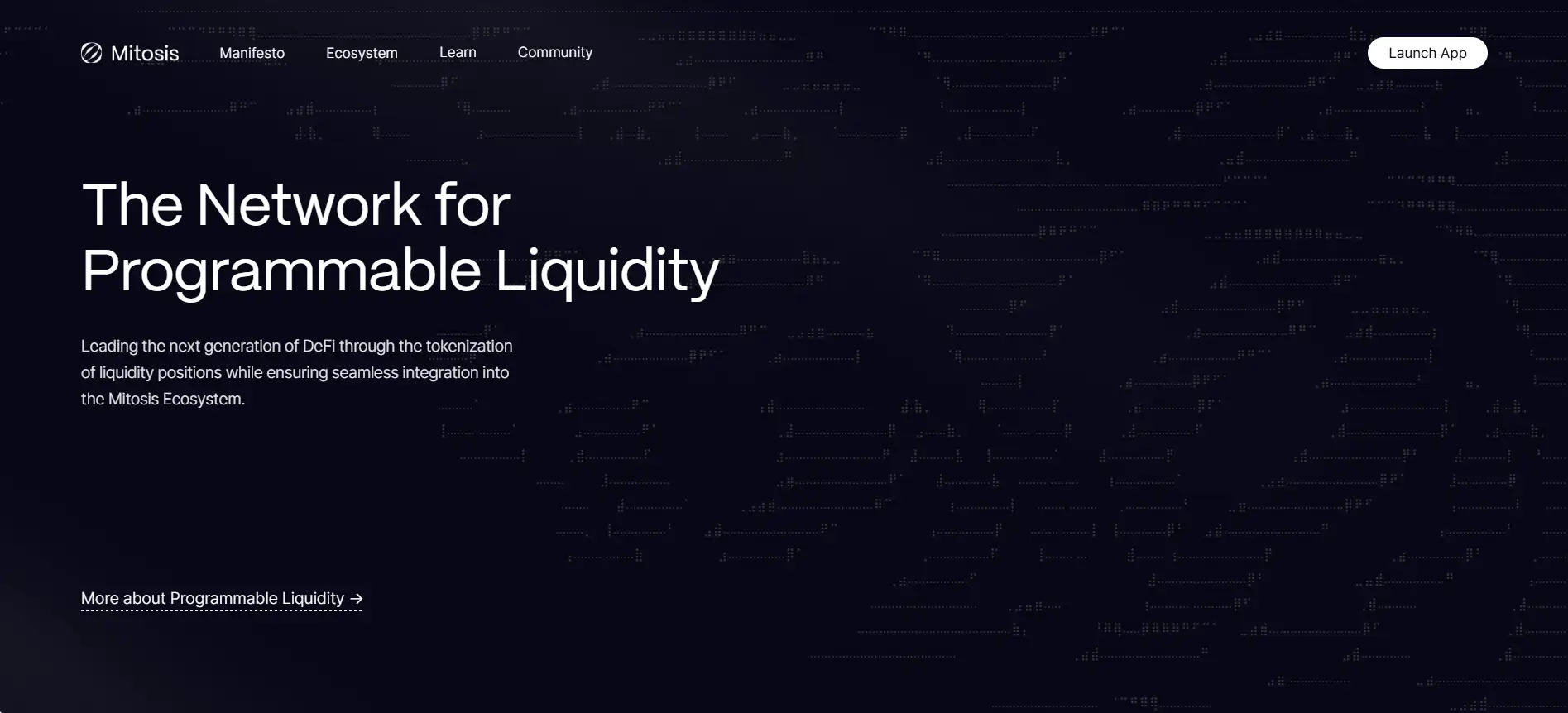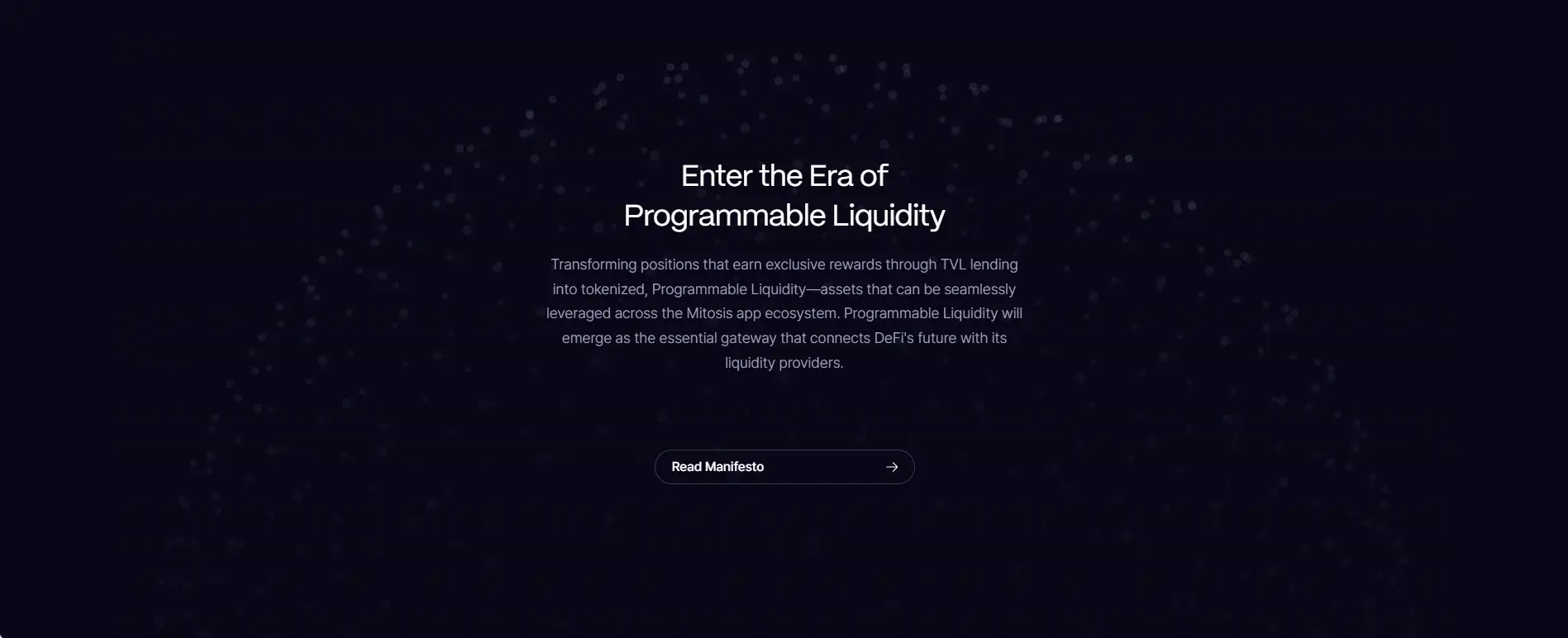About Mitosis
Mitosis is a forward-thinking decentralized finance protocol engineered to solve one of DeFi’s most fundamental problems — the inefficiency and opacity of liquidity provisioning. In traditional DeFi, liquidity providers often lock their assets in single-use pools with no programmability, and the best yields are often locked behind closed-door deals with whales or insiders. Mitosis eliminates these inefficiencies by introducing a model where liquidity positions become programmable, transparent, and accessible to all participants, regardless of scale.
At the core of Mitosis lies a unique ecosystem where liquidity is tokenized through the issuance of Hub Assets that users receive upon depositing into vaults. These assets can be further transformed into miAssets or maAssets via two frameworks — Ecosystem-Owned Liquidity (EOL) and Matrix. This design gives users the ability to create programmable, tradeable, and composable financial products. Backed by robust governance, transparent yield distribution, and multi-chain interoperability, Mitosis is shaping the future of programmable liquidity in DeFi.
Mitosis is an advanced DeFi protocol that redefines how liquidity is deployed and used within decentralized ecosystems. The platform was created in response to the systemic inefficiencies in liquidity allocation and transparency across existing DeFi protocols. Typically, when users provide liquidity, their funds are locked in static positions. The most profitable opportunities are reserved for large-scale players who can negotiate private deals, which results in a system with significant information asymmetry. Mitosis breaks this mold by offering a programmable liquidity framework accessible to all.
The process begins when users deposit assets into Mitosis Vaults across multiple blockchains. These deposits are represented on the Mitosis Chain as Hub Assets, which are the foundation for participating in two distinct reward frameworks. First is Ecosystem-Owned Liquidity (EOL), which utilizes collective capital governed democratically. Participants in EOL earn yield through a shared decision-making model. The second is Matrix, a flagship product that curates exclusive deals with top DeFi protocols and allows users to commit assets with defined terms and transparent rewards. Matrix is especially notable for rewarding loyalty and contribution consistency through gated access mechanisms.
Both systems issue position tokens — miAssets for EOL and maAssets for Matrix — which are programmable and interoperable within the broader Mitosis ecosystem. These tokens are more than passive yield-bearing instruments; they can be traded, decomposed, or even combined with other assets, paving the way for sophisticated DeFi strategies such as synthetic asset creation, collateral reuse, and principal-yield separation.
The infrastructure of Mitosis is purpose-built to synchronize activity across chains. With precise settlement systems that handle yield tracking, losses, and bonus distributions, it ensures fair and verifiable reward systems across its ecosystem. This fosters not just trust, but unlocks the ability to build complex financial applications atop Mitosis infrastructure.
A major strength of Mitosis lies in its ability to democratize access to yields. Through pooled governance and transparent pricing, even smaller liquidity providers can access deals once exclusive to whales. This approach levels the playing field while enabling the creation of new financial instruments and integrations. The result is a composable, modular DeFi network that addresses core inefficiencies while pushing the limits of programmable finance.
Some of the protocols similar in scope or ambition include Yearn Finance, Ribbon Finance, and Pendle, though none currently offer the same breadth of programmable liquidity integrations and tokenized positions that Mitosis provides.
Mitosis provides numerous benefits and features that position it as a groundbreaking innovation in the DeFi liquidity space:
- Programmable Liquidity: Transforms passive positions into active, programmable assets that can be reused across DeFi protocols for collateral, yield strategies, and more.
- Multi-Chain Compatibility: Deposit from any chain and receive Hub Assets that can interact with the entire Mitosis ecosystem across networks.
- Matrix & EOL Frameworks: Participate in two structured systems for yield farming — one curated (Matrix) and one governed democratically (EOL).
- Tokenized Positions: Receive miAssets or maAssets that represent real-time DeFi positions, opening up possibilities for DeFi composability and advanced financial tools.
- Transparent Reward Mechanism: All deals and campaigns are visible on-chain with clear terms, removing the opacity commonly found in DeFi yield programs.
- Community Governance: Especially through EOL, users actively vote on where pooled liquidity should be directed, democratizing liquidity provisioning.
- Institutional-Grade Infrastructure: High-precision settlement and tracking systems make Mitosis a robust platform for building next-generation DeFi products.
Mitosis makes it easy to begin your journey into programmable liquidity and decentralized finance innovation. Follow these steps to get started:
- Visit the Platform: Navigate to the official Mitosis website and click “Launch App” in the top right.
- Connect a Wallet: Use a compatible wallet like MetaMask or WalletConnect to connect to the app. Ensure you're connected to a supported network.
- Deposit Assets: Choose an asset and deposit it into a Mitosis Vault. This will generate Hub Assets on the Mitosis Chain that represent your deposit.
- Select Your Framework: Decide between Ecosystem-Owned Liquidity (EOL) for governance-driven rewards, or Matrix for curated yield deals. Your choice will determine whether you receive miAssets or maAssets.
- Track and Redeem: Use the dashboard to monitor yields, rewards, and accrued points. Redeem your assets or participate in new campaigns as opportunities arise.
- Participate in Governance: If using EOL, take part in governance proposals to shape the allocation of pooled liquidity and influence the future of the ecosystem.
- Explore Educational Resources: For in-depth tutorials, visit the “Learn” section or browse Mitosis University on the official site.
Mitosis FAQ
Mitosis revolutionizes liquidity provisioning by converting static deposits into programmable liquidity positions. When users deposit assets into Mitosis Vaults, they receive Hub Assets on the Mitosis Chain that represent their deposits. These Hub Assets can then be tokenized into miAssets or maAssets, which are transferable, composable, and usable across multiple chains. This architecture transforms traditional, locked liquidity into flexible components that can be reused, traded, or collateralized within the Mitosis ecosystem, enabling users to maximize rewards while maintaining control over their assets.
miAssets and maAssets are at the heart of the Mitosis programmable liquidity model. miAssets represent positions within the Ecosystem-Owned Liquidity (EOL) framework, where assets are collectively managed through governance. maAssets, by contrast, represent direct participation in curated Matrix campaigns with predetermined terms. Both token types act as programmable building blocks that can be decomposed, recombined, or used as collateral to craft sophisticated DeFi strategies. This tokenization expands users’ ability to design unique financial instruments while retaining full transparency over their positions in Mitosis.
Matrix, the flagship product of Mitosis, ensures fairness by offering curated liquidity opportunities with transparent rules and reward structures. Unlike traditional DeFi platforms where large investors negotiate private deals, Matrix uses gated access based on contribution size and duration, giving loyal participants priority without hidden arrangements. All campaigns are visible on-chain, making it possible for any user to verify terms and outcomes. This transparency and equitable design make Matrix a trusted environment for achieving superior DeFi yields.
Mitosis empowers builders by offering a dedicated infrastructure for advanced DeFi strategies through miAssets and maAssets. These programmable tokens can be integrated into third-party applications to develop novel products such as synthetic assets, yield-splitting mechanisms, or multi-protocol arbitrage strategies. By providing a unified settlement layer on the Mitosis Chain, builders gain access to cross-chain liquidity, verifiable pricing, and composable primitives. This enables developers to move beyond simple liquidity provision and innovate in areas like decentralized asset management and complex financial engineering within the Mitosis ecosystem.
The Ecosystem-Owned Liquidity (EOL) framework in Mitosis shifts control from centralized actors to the community. Through EOL, liquidity providers pool assets that are collectively managed, and decisions about allocation strategies are made via on-chain governance. Participants holding miAssets have direct influence over proposals, making yield allocation a democratic process. This design not only enhances transparency but also gives smaller liquidity providers the same collective bargaining power as large-scale investors. The result is a fairer, more decentralized liquidity system within Mitosis.
You Might Also Like












